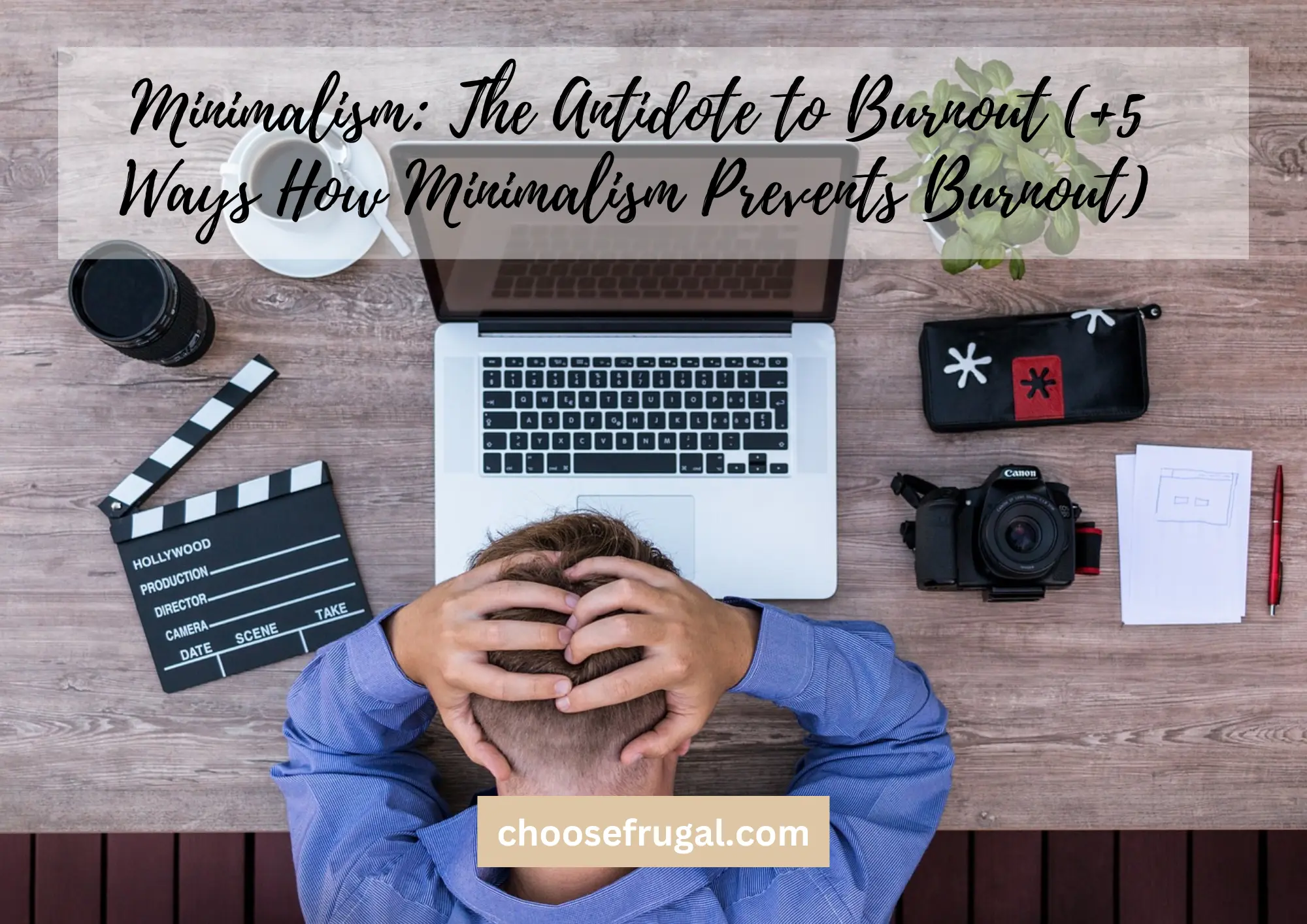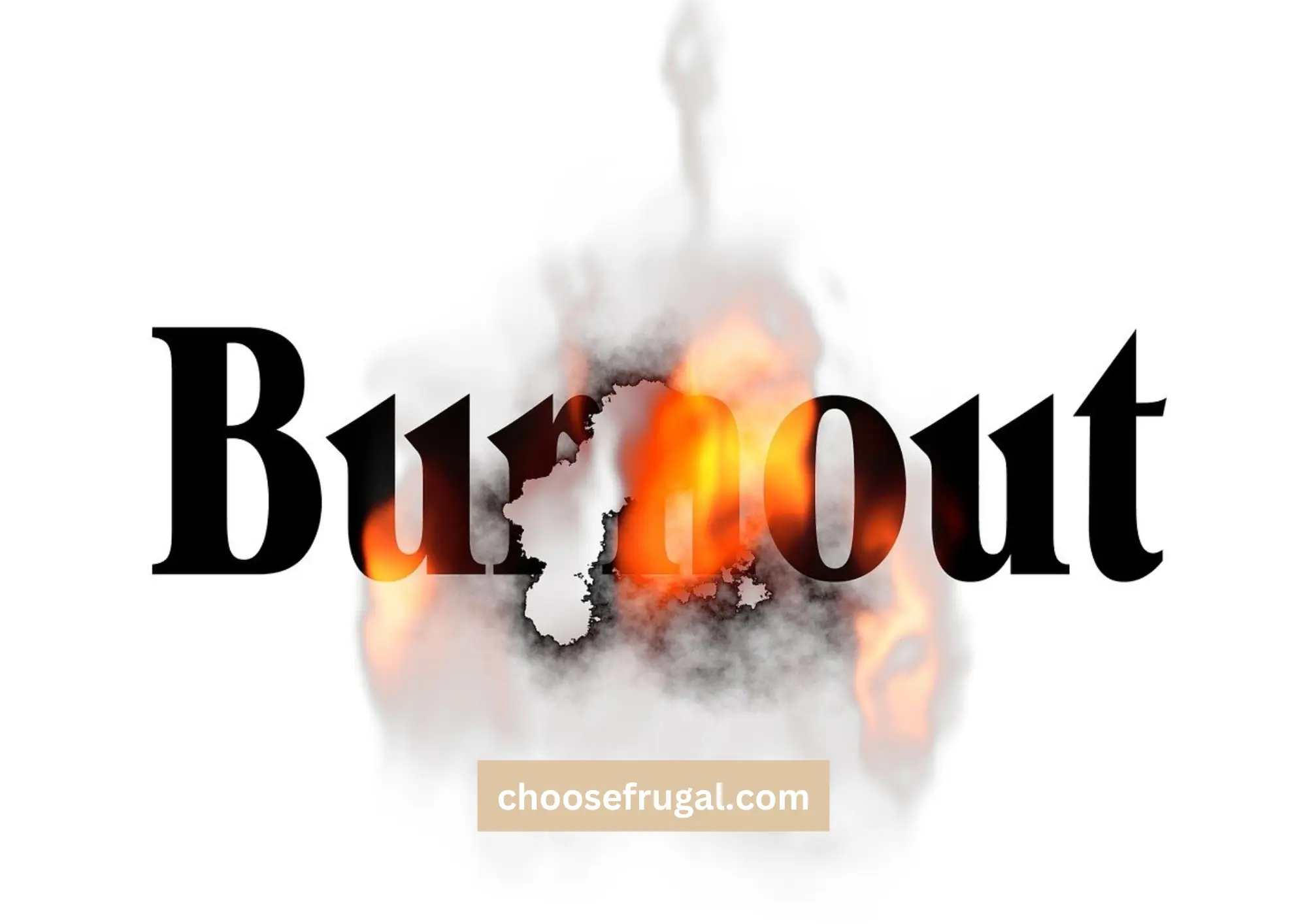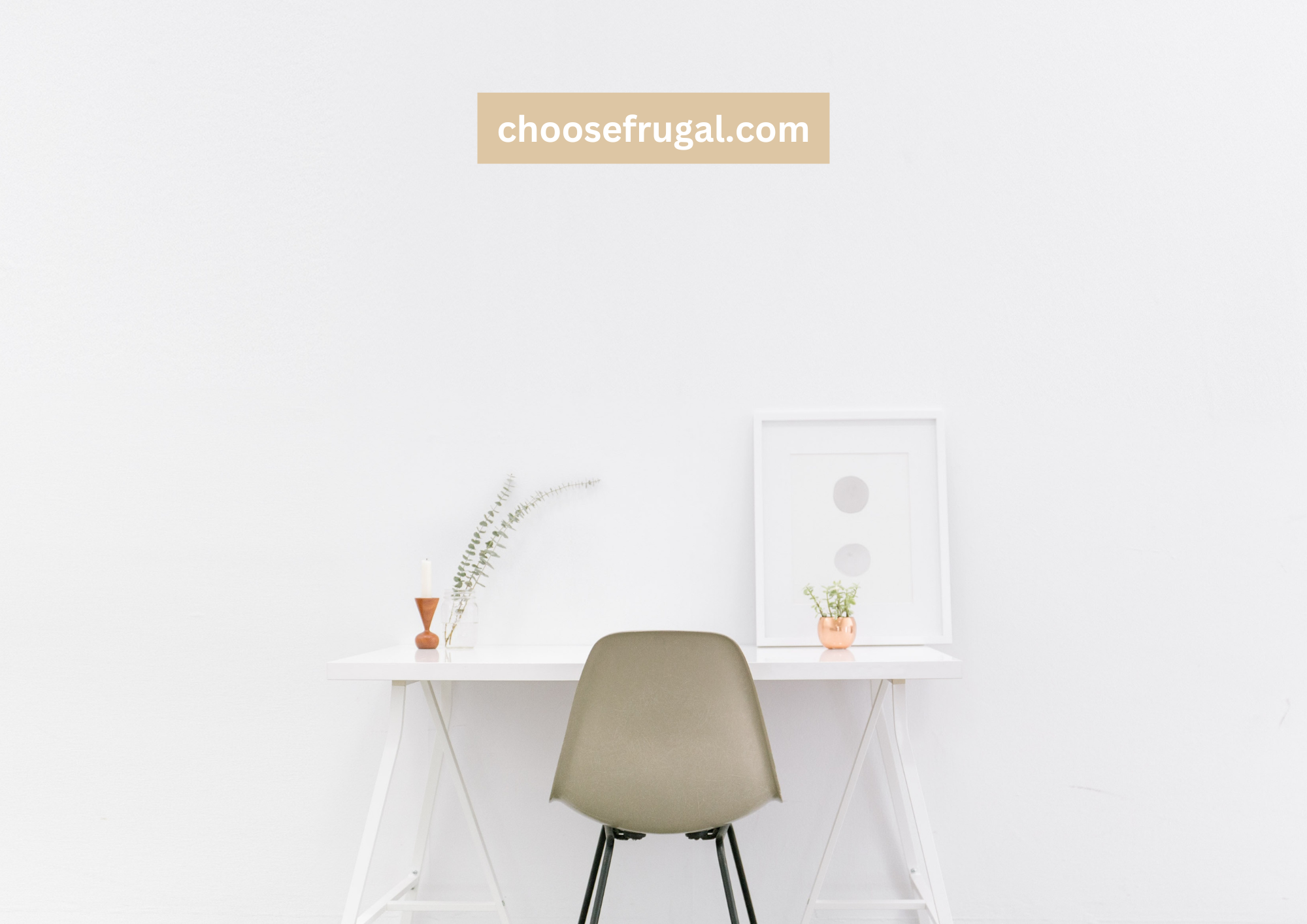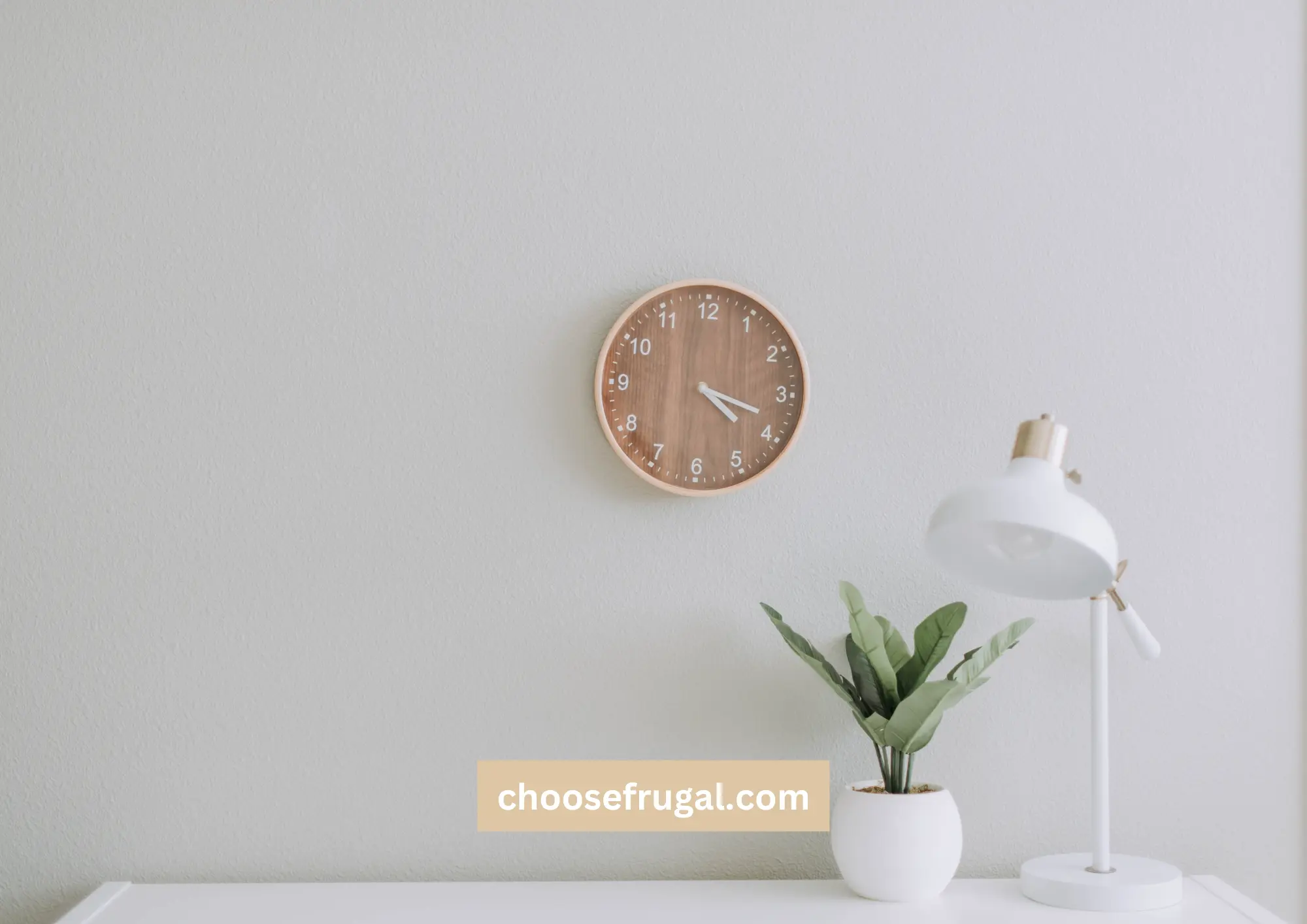 In today’s fast-paced and demanding world, burnout has become an increasingly common phenomenon. Defined as a state of chronic physical and emotional exhaustion, burnout can significantly impact our mental well-being, productivity, and overall quality of life. However, embracing a minimalist lifestyle can offer a powerful remedy to combat burnout.
In today’s fast-paced and demanding world, burnout has become an increasingly common phenomenon. Defined as a state of chronic physical and emotional exhaustion, burnout can significantly impact our mental well-being, productivity, and overall quality of life. However, embracing a minimalist lifestyle can offer a powerful remedy to combat burnout.
By simplifying our lives and prioritizing what truly matters, minimalism helps create a more balanced and fulfilling existence. In this article, we will explore what burnout is, its causes, and how adopting minimalism can serve as a preventive measure.
Understanding Burnout
Burnout is not merely feeling tired or stressed from a long day at work; it is an extreme state of chronic exhaustion that arises from prolonged exposure to overwhelming work pressures, unrealistic expectations, and a lack of balance between professional and personal life.
Burnout affects various aspects of our lives, including our mental health, physical well-being, and relationships. Symptoms may include persistent fatigue, cynicism, reduced productivity, detachment, and even physical health issues.
If you want to learn more about burnout and what it is, watch this video by How To ADHD: What Does It Mean to Have “Burnout”?
Signs and Symptoms of Burnout:
Recognizing the signs and symptoms of burnout is crucial in addressing and preventing it. While individual experiences may vary, here are some common indicators of burnout:
Physical Exhaustion: Persistent fatigue and lack of energy, despite getting enough rest, can be a significant symptom of burnout. You may feel physically drained, sluggish, and find it difficult to recover even after periods of rest or vacation.
Emotional Exhaustion: Burnout often manifests as emotional exhaustion. You may experience a sense of being overwhelmed, emotionally drained, and unable to cope with everyday stressors. Emotional exhaustion can lead to feelings of irritability, cynicism, or detachment from work and personal relationships.
Reduced Productivity and Engagement: Burnout can significantly impact your productivity and engagement levels. You may notice a decline in your ability to concentrate, focus, and complete tasks efficiently. Procrastination, difficulty in making decisions, and a sense of apathy towards work can become apparent.
Increased Negativity and Cynicism: Burnout can lead to a negative outlook, where you may develop a cynical or pessimistic perspective towards work, colleagues, or life in general. You may find it challenging to see the positive aspects of your work or feel disillusioned with your career path.
Decreased Satisfaction and Sense of Accomplishment: A hallmark symptom of burnout is a reduced sense of satisfaction and accomplishment in your work. Despite your efforts, you may feel that your work is not making a meaningful impact or that your achievements go unnoticed. This can contribute to feelings of frustration, demotivation, and dissatisfaction.
Cognitive Difficulties: Burnout can impair cognitive functioning. You may experience memory problems, difficulty concentrating, and reduced creativity. Decision-making can become challenging, and you may feel mentally foggy or have a lack of clarity.
Physical Symptoms: Burnout can also manifest in physical symptoms such as headaches, stomachaches, muscle tension, and changes in appetite or sleep patterns. The chronic stress associated with burnout can weaken the immune system, making you more susceptible to illnesses.
It’s important to remember that burnout is a complex condition, and experiencing some of these symptoms does not necessarily mean you have burnout. However, if you consistently experience several of these symptoms and they interfere with your daily functioning, it may be essential to seek support and make changes to prevent further escalation.
By being aware of these symptoms, you can recognize when you may be at risk of burnout and take proactive steps to address it. Prioritizing self-care, setting boundaries, and seeking support from professionals or loved ones can help in managing and preventing burnout.
Causes of Burnout:
 Understanding the symptoms of burnout is of little importance if you cannot identify the cause of the burnout. Understanding how minimalism prevent burnout is also only useful if you can use minimalist practices in the right ways. So, what are the causes of burnout?
Understanding the symptoms of burnout is of little importance if you cannot identify the cause of the burnout. Understanding how minimalism prevent burnout is also only useful if you can use minimalist practices in the right ways. So, what are the causes of burnout?
Excessive Workload
A common cause of burnout is being constantly overwhelmed by an excessive workload, tight deadlines, and long working hours. The relentless pressure to meet high expectations can gradually deplete our energy and motivation.
Lack of Boundaries
When work boundaries become blurred, and we struggle to establish a healthy work-life balance, burnout becomes more likely. Constantly being connected to work through technology and feeling obliged to be available at all times can erode our personal time and relaxation.
Perfectionism
Striving for perfection in every aspect of our lives can be a recipe for burnout. Setting unrealistic standards and constantly feeling the need to prove ourselves can lead to a cycle of self-imposed pressure and exhaustion.
Cluttered Environment
A cluttered physical environment can contribute to mental clutter, making it difficult to focus and find peace. The constant presence of unnecessary possessions can create additional stress and overwhelm.
Why Minimalism Can Help Prevent and Treat Burnout:
 Understanding how minimalism can prevent burnout is crucial if you want to get your burnout under control and live your best life. Here are 5 reasons why minimalism can help prevent and treat burnout.
Understanding how minimalism can prevent burnout is crucial if you want to get your burnout under control and live your best life. Here are 5 reasons why minimalism can help prevent and treat burnout.
1. Simplifies Life and Reduces Overwhelm
Minimalism is centered around simplifying our lives and reducing clutter, both physically and mentally. By adopting a minimalist lifestyle, we actively eliminate non-essential possessions, commitments, and distractions. This reduction in external stimuli allows us to focus on what truly matters and avoid the overwhelming feeling of being pulled in multiple directions. By simplifying our lives, we create space for rest, self-care, and activities that bring us joy, which are essential in preventing and treating burnout.
2. Establishes Boundaries and Promotes Work-Life Balance
Burnout often occurs when there is an imbalance between work and personal life. Minimalism encourages setting clear boundaries and prioritizing personal time and well-being. By consciously choosing what we engage in and establishing limits on work-related activities, we create a healthier work-life balance. This separation helps prevent work from encroaching on our personal lives and provides time for relaxation, self-reflection, and pursuing activities outside of work, all of which are vital in preventing burnout.
3. Reduces Perfectionism and Performance Pressure
Minimalism challenges the notion that we need to constantly prove ourselves and strive for perfection in every aspect of our lives. The minimalist mindset encourages focusing on essential tasks and letting go of the need for constant achievement. By embracing the concept of “enough” and understanding that our value is not solely determined by our productivity, we can alleviate the pressure to perform at an unsustainable pace. This shift in perspective allows us to set more realistic expectations, reduce stress, and prevent burnout.
4. Enhances Mindfulness and Presence
Minimalism emphasizes living in the present moment and being mindful of our choices and experiences. Practicing mindfulness helps us cultivate self-awareness, reduce stress, and improve overall well-being. By slowing down, paying attention to our thoughts and feelings, and consciously making decisions, we can better recognize the early signs of burnout and take proactive steps to prevent it. Mindfulness also enables us to fully engage in activities, savor moments of relaxation, and appreciate the simple joys in life, all of which contribute to burnout prevention and treatment.
5. Promotes Intentional Living and Prioritization
Minimalism encourages intentional living by focusing on what truly matters to us. By decluttering our physical and mental spaces, we gain clarity and a deeper understanding of our values and priorities. This self-reflection allows us to align our actions with our values, say no to non-essential commitments, and invest our time and energy in activities that bring us fulfillment. By aligning our lives with our true priorities, we reduce the risk of overextending ourselves and experiencing burnout.
Minimalism as a Preventive Measure:
 Now that you know why minimalism prevents burnout, you may wonder how exactly, that happens. Here are 5 ways how you can use minimalism to prevent burnout to help you reduce your stress and improve your quality of life.
Now that you know why minimalism prevents burnout, you may wonder how exactly, that happens. Here are 5 ways how you can use minimalism to prevent burnout to help you reduce your stress and improve your quality of life.
Simplify Your Schedule: Minimalism encourages us to evaluate our commitments and prioritize what truly matters. By simplifying our schedule and focusing on essential tasks, we can avoid overextending ourselves and create space for self-care and relaxation.
Establish Boundaries: Adopting a minimalist mindset involves setting clear boundaries between work and personal life. Establish designated times for work and ensure you have dedicated time for rest, hobbies, and quality time with loved ones. Disconnecting from work-related technology during these periods can be immensely beneficial.
Embrace Essentialism: Essentialism is a key principle of minimalism, focusing on identifying and prioritizing the most important aspects of our lives. By eliminating non-essential activities and commitments, we can free up time and energy for activities that truly bring us joy and fulfillment.
Declutter Your Physical Space: Minimalism advocates for decluttering and organizing our physical environment. A tidy and simplified living space promotes a sense of calm and reduces the mental burden of excess possessions. Start by decluttering one area at a time and embrace the concept of “less is more.
Cultivate Mindfulness: Practicing mindfulness allows us to be fully present and aware of the current moment. By cultivating mindfulness, we can reduce stress, improve focus, and enhance overall well-being. Incorporate activities such as meditation, yoga, or mindful breathing into your daily routine.
Other Benefits of Minimalism
 Of course, preventing burnout isn’t the only advantage of minimalism. In fact, there are many other advantages of minimalism in your everyday life. Let’s consider a few of them.
Of course, preventing burnout isn’t the only advantage of minimalism. In fact, there are many other advantages of minimalism in your everyday life. Let’s consider a few of them.
Financial Well-being: Minimalism extends beyond decluttering physical possessions; it also applies to our financial habits. By adopting a minimalist approach to finances, we prioritize mindful spending, reduce debt, and avoid unnecessary consumerism.
This financial freedom helps alleviate the stress associated with financial burdens, providing a sense of security and peace of mind. By managing our finances in alignment with minimalist principles, we can reduce financial stress, which is a significant contributor to burnout.
Improved Physical Health: Minimalism can positively impact our physical health, which plays a crucial role in preventing burnout. By decluttering our living spaces, we create a cleaner and healthier environment.
Additionally, simplifying our schedules and prioritizing self-care activities such as exercise, proper nutrition, and adequate sleep contribute to our overall well-being. When we prioritize our physical health, we enhance our resilience and ability to cope with stress, reducing the risk of burnout.
Enhanced Emotional Well-being: Minimalism fosters emotional well-being by encouraging us to let go of unnecessary emotional baggage, toxic relationships, and negative thought patterns. By practicing emotional minimalism, we create space for positive emotions, self-reflection, and personal growth.
This emotional clarity helps us better understand our triggers, manage stress, and build resilience in the face of challenges, ultimately reducing the likelihood of burnout.
Environmental Consciousness: Minimalism aligns with sustainability and environmental consciousness. By adopting a minimalist lifestyle, we reduce our consumption, waste, and carbon footprint. Embracing eco-friendly practices, such as minimal waste and mindful consumption, can instill a sense of purpose and contribute to a healthier planet.
Being environmentally conscious not only benefits the planet but also promotes a sense of interconnectedness and fulfillment, reducing the risk of burnout caused by existential crises or feelings of detachment.
Mindful Relationships and Social Connections: Minimalism encourages us to evaluate the quality of our relationships and prioritize meaningful connections. By surrounding ourselves with positive and supportive individuals, we create a nurturing social network.
Additionally, practicing mindful communication and setting healthy boundaries in our relationships helps prevent emotional exhaustion and burnout. Cultivating fulfilling relationships and social connections provides a vital support system during challenging times and promotes overall well-being.
Cultivating Gratitude and Contentment: Minimalism emphasizes gratitude and contentment with what we have, shifting our focus from constant acquisition to appreciating the present moment. By cultivating gratitude, we reduce feelings of scarcity and the need for external validation, fostering contentment and reducing the risk of burnout driven by materialistic desires or constant comparison with others.
By incorporating these additional points, the article will provide a more comprehensive understanding of how minimalism can prevent and treat burnout, covering various aspects of our lives, including financial, physical, emotional, environmental, and social well-being.
Conclusion
In conclusion, minimalism offers a holistic approach to combat burnout. By simplifying, prioritizing, and embracing intentional living, we create space for rest, self-care, and activities that bring us joy. It is through these intentional choices that we cultivate resilience, maintain work-life balance, and nurture our well-being.
By adopting a minimalist mindset, we can live a more balanced, fulfilled, and burnout-resistant life. Remember, in the pursuit of simplicity lies the key to lasting well-being.

Thank you for reading this article! If you are interested in learning more about minimalism and how it can improve your life, please also read our other articles on the topic.
Cheap Ideas for a Minimalist Kitchen
How to Implement a Minimalist Desk Setup Even if You Are Disorganized
How to Create a Minimalist Bohemian Living Room
Minimalist Fashion and 5 Benefits of Owning Fewer Clothes
Minimalism for busy professionals: 5 ways to simplify your work life
The 10 Benefits of Living in a Small Minimalist Apartment on a Budget
P.S. Want to know when our next post lands and get our free ebook on how to live frugally? Then click the link below.